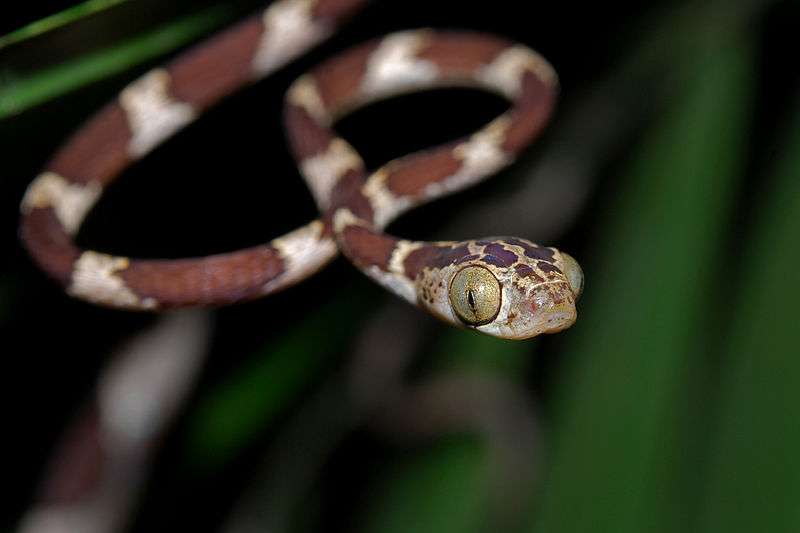
Description:
Scientific name: Imantodes cenchoa
Life span: Around 10 years
Imantodes cenchoa is a species of mildly venomous, rear-fanged snake in the Colubridae family. The names blunt-head tree snake, fiddle-string snake, and mapepire corde violon also know it. Its lengthy, slender body and enormous head distinguish I. cenchoa. Its eye’s pupil is quite different from that of other snakes. As most snakes have relatively limited vision, they often rely on smell and vibrations to look for clues of prey and predators. Compared to other snakes, arboreal snakes have substantially better vision. The pupil of the blunt-head tree snake is slit vertically, allowing it to view downward. The blunt-head tree snake has an edge over other snakes because of this characteristic.
Native Region/Habitat
Mexico, the majority of Central America, and portions of South America south of Argentina in the north are all home to I. cenchoa.
Arboreal refers to the blunt-head tree snake. Most frequently, it can be found among low vegetation like bromeliads or coffee trees. It favors chilly, humid environments like wet forests and rainforests. It can be found between sea level and 1,700 m in elevation (5,600 ft).
Behavior:
As the blunt-head tree snake is a nocturnal creature, it can often be spotted during the day curled up in deep shadow. It forages for food at night through thick undergrowth on the ground until it reaches its nighttime resting spots in the trees.
Care As a pet/In captivity:

Enclosure: A blunt-headed tree snake enclosure should be at least 40 gallons in size. The enclosure needs to be at least 24 inches high because the snake wants to climb. The tank should have a minimum depth of 15 inches and a minimum width of 15 inches.
Temperature and Humidity: In the tank, create two distinct spaces. The temperature in one region should be between 85 and 89 degrees Fahrenheit for basking. To encourage the cold evening temperatures after sunset, turn off the basking lamp at night. Employ a basking lamp to raise the warmth of the basking area. The cool end of the tank, where the temperature should be between 70 and 75°F, should be the other location in the tank. Reduce the temperature to 65°F overnight while using a thermometer to measure the temperature.
In order to replicate the moist, humid climate that the blunt-headed tree snake is used to in the wild and to aid the snake in shedding, the recommended humidity for a blunt-headed tree snake enclosure is between 75% and 85%. Hygrometers can be used to measure humidity.
Food and Water: Amphibians and young lizards make up the blunt-headed tree snake’s food in the wild. In captivity, follow this food exactly. Every ten days, feed the geckos and anoles in the snake feeder, being sure to leave out enough food for the snake to finish in 20 minutes. Every seven days, give young snakes a meal of Dubia roaches, super worms, and small lizards. You shouldn’t try to feed rats or mice to blunt-headed tree snakes since their necks are thinner than those of most other snakes.
This type of snake requires continuous access to a clean water source. To enable the snake to sip water from a height in the enclosure, think about adding a water bowl halfway up the wall. If your tank arrangement prevents you from using an elevated water bowl, a water bowl on the enclosure’s floor will do.
Table





